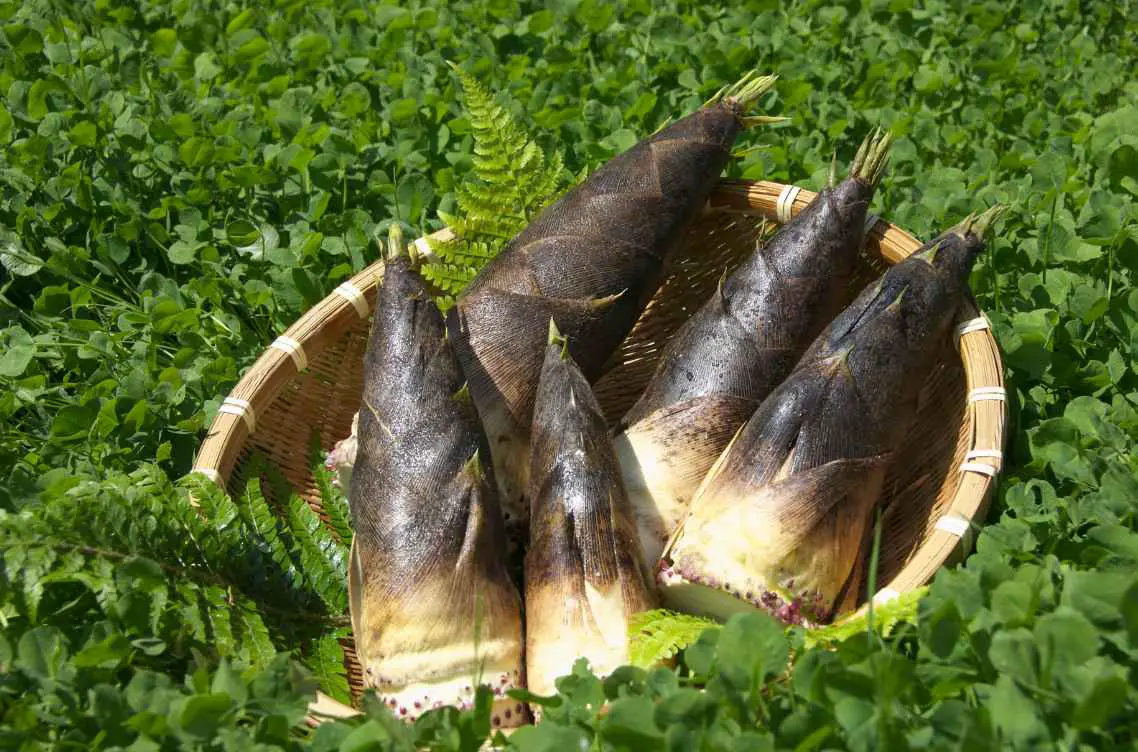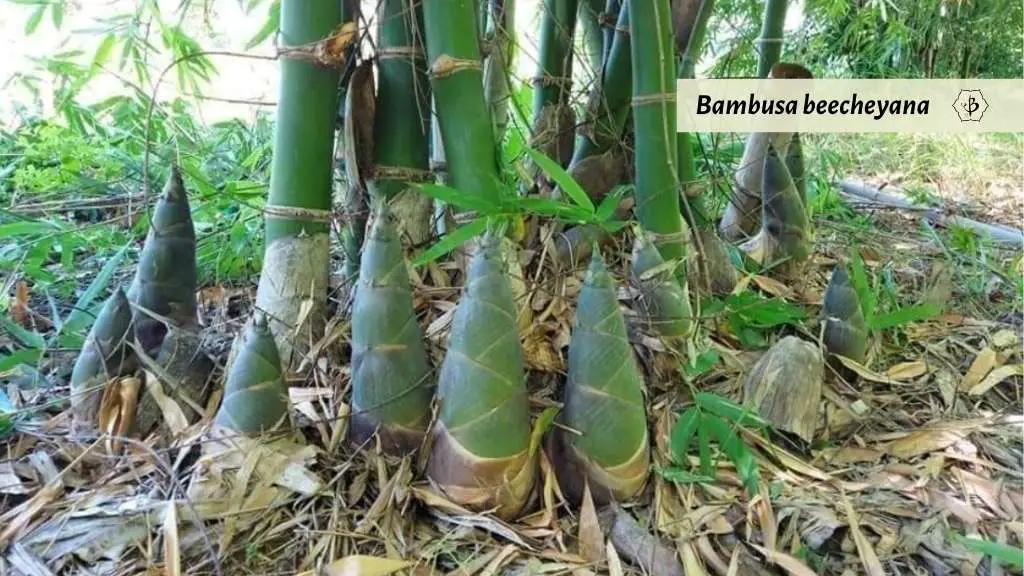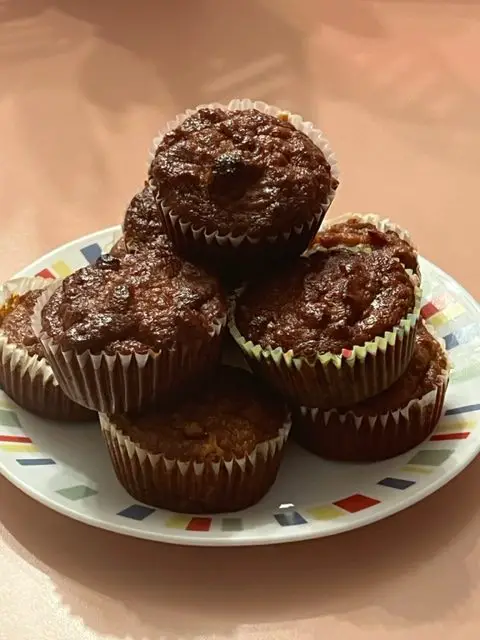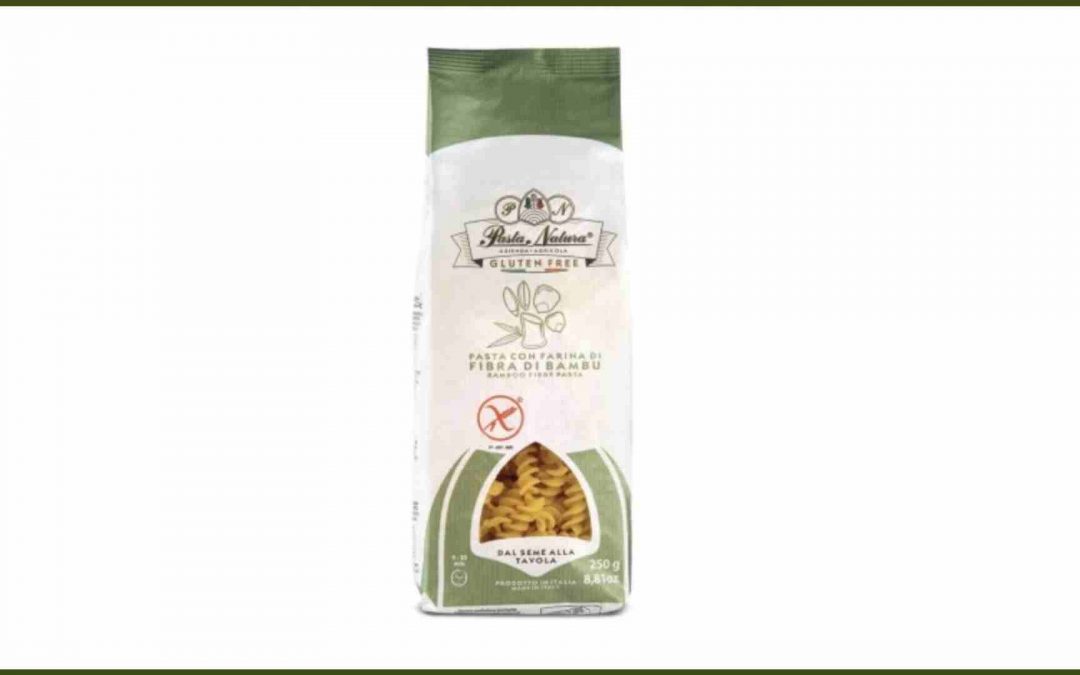Just when I thought I’d seen every possible product made from bamboo, my friend tells me about bamboo spaghetti. Excusez–moi? That’s right, they’re making pasta from bamboo flour. Wait a minute… I’m still trying to wrap my head around bamboo flowering.
Bamboo flour is the latest innovation made from the fresh, young shoots of edible bamboo species, like Moso, which can be dried and ground into powder. Like conventional flour from grains like wheat and corn, bamboo flour can be baked into bread, tortillas or even pasta. At the intersection of two surging trends, the gluten-free dietary craze and the wave of sustainable bamboo goods, bamboo flour promises to be quite a sensation, at least in certain social circles.
UPDATE: This article first appeared in March 2022, last updated in September 2023.
Bamboo for your health
Bamboo shoots, abundant throughout tropical and equatorial zones around the globe, are a rich source of fiber and protein as well as vitamins B6 and E. For hundreds if not thousands of years, Asians have harvested the fresh, tender shoots of their flourishing bamboo forests as a simple, readily available source of sustenance. In many parts of the developing world, where bamboo is most prolific, the shoots still make up an important part of the diet.
Many species of the genus Phyllostachys, including Moso (P. edulis) and others, especially widespread in China, are recognized for producing delicious shoots. To the south, in Indonesia and South East Asia, Dendrocalamus asper is one of the favorite species for edible consumption. Even in Kenya and other parts of Africa, there are native bamboo species with a tradition of culinary use.

It’s important to know, however, that not all bamboo is edible. In South America, for instance, where bamboo is also very prevalent, the native species are not suitable for consumption.
Bamboo and toxicity
Also, bamboo shoots, even the edible ones, contain natural toxins called cyanic glycosides. Therefore, you can’t just dig a bamboo shoot out of the ground and toss it into a salad. Bamboo needs to be thoroughly cooked in order to be suitable for consumption.
But don’t panic, it’s quite similar to potatoes, when you think about it. It’s usually recommended to boil the shoots for half an hour to 45 minutes. Or what many do is boil them for 20 minutes, drain and replace the water, and boil another 20 minutes.
In the same way, bamboo shoots should also be boiled before making flour. Good to know if you’re making it yourself. Just boil them thoroughly, let them dry, and then grind them into flour.
(Check out our in-depth article on edible bamboo to learn more.)
Bamboo flour on the rise
In Asian and African cultures, bamboo food is nothing new. There’s a long and well-established tradition of fermenting bamboo shoots and adding them to stir-fry dishes. In Africa, dried bamboo is a more common product. But bamboo flour is something of a novel idea.
In Europe and the United States, there’s also a significant market for bamboo shoots. But without the kinds of bamboo forests like in Asia, Westerners must generally rely on canned shoots, which aren’t nearly as tasty as the fresh ones. It’s not easy to get the bamboo from harvest to market in a timely manner. So fresh bamboo shoots are a rarity, although the canned product is much less of a delicacy.
Bamboo flour offers an easy solution to this supply chain challenge. Fresh bamboo shoots can be dried, without compromising their quality or nutrition, and then ground into flour. Unlike fresh produce, bamboo flour can be easily stored and shipped.

The source of bamboo flour’s growing popularity is twofold. Bamboo is hot on the market for its reputation as a remarkably renewable resource, a woody grass of unsurpassed sustainability. The range of quality products, from flooring to bed sheets, is pretty astonishing. At the same time, the allergenic and health-conscious corners of the world are driving unprecedented demand for gluten-free cuisine, from crackers to pasta and pizza dough.
A gluten-free alternative
Bamboo flour is particularly interesting to people who maintain a gluten-free or low-carb diet, including those on paleo or keto diets.
Conventional flour, made from any number of different grains, contains gluten. In recent years, increasing numbers of people have expressed sensitivity or allergy to gluten, especially serious among those with celiac disease. An elastic string of proteins, gluten is most prevalent in wheat, but also occurs in grains like rye and barley. Some less common grains, like sorghum and millet, do not contain gluten.
Like other grain-producing plants, bamboo does belong to the grass family. However, bamboo flour comes from the shoots, and not the grains (seeds) themselves. It is unclear whether bamboo grains actually contain gluten, but the shoots most certainly do not.
Usually, gluten-free flour is produced from gluten-free grains, like those mentioned above. Beans, coconut and almonds can also provide a source of non-allergenic flour. It’s rather surprising to see that a woody plant like bamboo can make flour, too. But the fresh shoots of bamboo are quite tender, and not woody like the mature culms.
Baking with bamboo flour
“What could I possibly make from bamboo flour?” you might wonder. In fact, you can make just about anything you would with ordinary, allergenic flour.

The main differences, as with other gluten-free alternatives, are the lack of elasticity and the limited rise. Think of bamboo as a good ingredient for non-rising items like chips and crackers. Fluffy loaves of bamboo bread, on the other hand, will be something of a challenge.
For most baking purposes, you may have to mix your bamboo flour with another kind of flour to get the best results. That could be a conventional wheat or whole grain flour, or some other gluten-free alternative like rice or almond flour. At this time, the are a handful of small bamboo flour producers, and that’s not a high level of consistency or standardization with the products.
Ultimately, a product like bamboo flour demands some amount of creativity, so think outside the box. How about Asian-Mex fusion? Sushi tacos on bamboo tortillas! Bamboo pizza dough is another brilliant idea. And, of course, bamboo pasta, as we mentioned at the top of this article, is already noodling its way into popular culture.
Banana nut bamboo muffins
The following recipe for Banana Nut Bamboo Muffins comes from Lilian Newcomb, one of our loyal readers. She adapted a recipe that called for regular flour, replacing it with a mix of bamboo and almond flours. She also substituted Alloluse for ordinary sugar to make the muffins diabetic-friendly.

Ingredients:
- 1 1/2 cups bamboo flour (from Zimmerman)
- 1 1/2 cups of almond flour
- 1/2 cup avocado oil
- 1 1/2 cups of Allulose (original recipe called for 2 cups of white sugar)
- 1 tsp baking powder
- 1 tsp baking soda
- 1 tsp salt
- 3 eggs
- 2 tsp vanilla
- 5 bananas, mashed
- 8 ounces of mashed or diced pineapple with juice
Put batter in muffin cups and bake at 350 degrees for 45 minutes. Check with a toothpick at 45 minutes. If not done, go another 5 or 10 minutes.
These muffins are good for you and great tasting. If the batter is too thick add water 1 tbsp at a time until it loosens up. Lilian has made two recipes so far, and they’ve turned out great using half and half bamboo flour and almond flour. Just adapt your recipes accordingly.
Shoots first, ask later
If you’re a fan of botanical gastronomy and bamboo cuisine, be sure to take a look at some of these other articles where we explore the many culinary possibilities from this remarkable grass.
- Bamboo flour and bamboo powder (YouTube)
- Bamboo Dialogue with Bambuttva flour founder (YouTube)
- Best bamboo species for shoots
- Bamboo leaf tea for supplemental silica
- Introducing bamboo chopsticks
- Bamboo water: Exotic refreshment
FEATURE PHOTO: Gourmet bamboo pasta from Pasta Natura.


























Would be nice to explain how to use the bamboo flour in baking. For example, is it a 1 to 1 replacement? Recipes? Does it require more liquid? Less? I have purchased some, but have no idea how to bake with it properly.
Hi Stephanie,
I’ve spoken to several people about this, and there’s a wide variety of bamboo flour out there. Some can be used as an ordinary substitute, but other varieties need to be mixed with some other type, which could be regular wheat flour or something more exotic like almond or rice flour. I’m trying to put together another video about this on my YouTube channel. Stay tuned!
I just made delicious banana nut muffins using 1/2 bamboo flour and 1/2 almond flour and changed out sugar for allulose, 1/2 cup avocado oil , 1 tsp baking powder, 1 tsp baking soda and 1 tsp salt Recipe called for 3 cups reg flour so just changed it for bamboo and almond flour. 2 cups of allulose was a little too much so went with 1 1/2 cups, 3 eggs 2 tsp vanilla 5 bananas mashed . Put batter in muffin cups and baked for about 45 mins (oh and 8 ounces of mashed or diced pineapple with juice. at 350 degrees. check at 45 mins with toothpick if not done another 5 or 10 mins. Good for you and great tasting. If batter is too thick add water 1 tbsp at a time until it loosens up. So far I have made two recipes and they turned out great using 1/2 bamboo flour and almond flour . Just adapt your recipes accordingly. Good luck
Hey Lillian, Thanks for sharing! Good to know the Zimmermann, from Germany, makes a good quality bamboo flour. Too bad it’s so hard to find a reliable and consistent source. We’ll have to keep our eyes out for a steady supply.
Have you made tortillas with it? I would love to have a recipe for them😊
That’s a great idea. We haven’t tried that yet. But Check out these Bamboo Empanadas